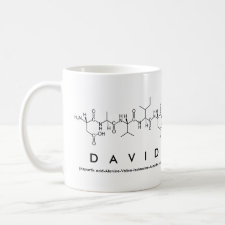
Authors: Hamdan S, Moore LJ, LeJeune J, Hasan F, Carlisle TK, Bara JE, Gin DL, LaFrate AL, Noble RD, Spivak DA, Warner IM
Article Title: Ionic liquid crosslinkers for chiral imprinted nanoGUMBOS.
Publication date: 2016
Journal: Journal of Colloid and Interface Science
Volume: 463
Page numbers: 29-36.
DOI: 10.1016/j.jcis.2015.10.033
Alternative URL: http://www.sciencedirect.com/science/article/pii/S0021979715302770
Abstract: Molecularly imprinted polymers (MIPs) are an important class of selective materials for molecular specific sensors and separations. Molecular imprinting using non-covalent interactions in aqueous conditions still remains a difficult challenge due to interruption of hydrogen-bonding or electrostatic interactions water. Newly developed crosslinking ionic liquids are demonstrated herein to overcome problems of synthesizing aqueous MIPs, adding to previous examples of ionic liquids used as monomers in non-aqueous conditions or used as MIP solvents. Vinylimidazole ionic liquid crosslinkers were synthesized and subsequently explored as matrix supports for fabrication of molecularly imprinted polymeric nanoGUMBOS (nanoparticles derived from a group of uniform materials based on organic salts). Each of the four crosslinkers incorporated a unique functional spacer between the vinylimidazole groups, and the performance of the corresponding molecularly imprinted polymers was evaluated using chiral recognition as the diagnostic. High uptake values for l-tryptophan were found in the 13-87 μmol/g range; and chiral recognition was determined via binding ratios of l-tryptophan over d-tryptophan that ranged from 5:1 to 13:1 for polymers made using different crosslinkers. Not only are these materials good for chiral recognition, but the results highlight the utility of these materials for imprinting aqueous templates such as biological targets for theranostic agents
Template and target information: l-tryptophan, tryptophan
Author keywords: Polymeric ionic liquids, NanoGUMBOS, Aqueous molecular imprinting, chiral recognition, Chiral amino acids, Ionic liquid crosslinkers



Join the Society for Molecular Imprinting

New items RSS feed
Sign-up for e-mail updates:
Choose between receiving an occasional newsletter or more frequent e-mail alerts.
Click here to go to the sign-up page.
Is your name elemental or peptidic? Enter your name and find out by clicking either of the buttons below!
Other products you may like:
 MIPdatabase
MIPdatabase









